GH or General Hardness is probably one of the most important aspects of your aquarium, yet no one really talks much about it! It is a measurement of magnesium and calcium hardness, carbonate hardness being the other.
GH is important because it can affect KH (Carbonate Hardness) and also affects pH (the lower the GH, the more acidic your water will be). Depending on the type of fish you house in your freshwater aquarium, you will need to keep gH levels within certain parameters.
Now, let’s talk about how to lower gH in an aquarium safely. Read On!
What Is GH (General Hardness)?
General Hardness (GH) is a measure of the total concentration of Calcium and Magnesium compounds in your aquarium. Since both calcium and magnesium are essential for fish to live, GH levels should always be kept within safe levels – If it’s too high, you may risk having unwell fish & if it’s too low, they may eventually die.
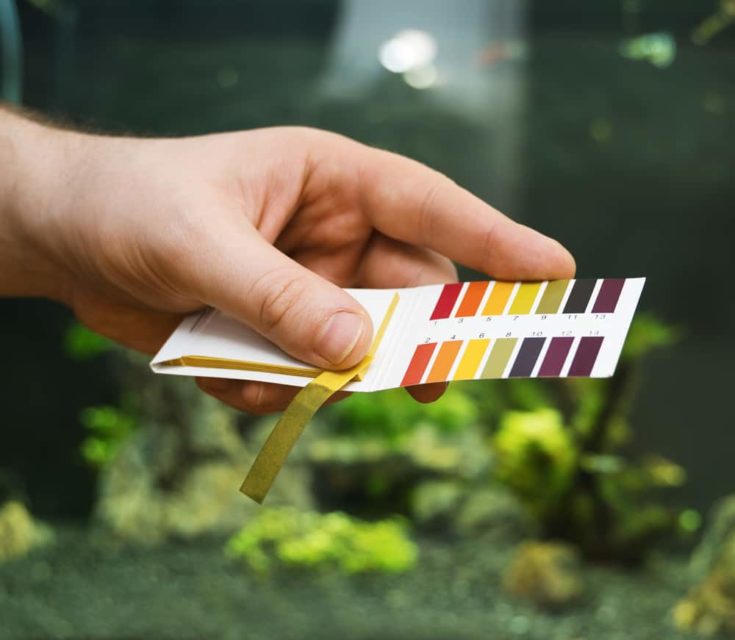
The majority of common freshwater aquarium fish species are known to do best when the gH is within 6-12 dGH (degrees GH). However, there are some that require very soft water at 3-5dGH, while others can tolerate very hard water up to 20dGH & beyond. For example, South American Cichlids prefer very soft water, while some African Cichlids thrive in very hard environments.
It’s highly recommended to research the type of fish you plan to keep before getting started with your aquarium. Doing so will prevent you from buying incompatible fish and also going through the trouble of changing your water chemistry.
What Happens When GH Levels Are Too High?
Now that we have a better idea of what the GH of water means, it’s time we take a look at what happens when it’s too high. Once the GH level of your aquarium water is higher than 12dGH, this can lead to several problems such as:
- Lower Survival Rates – Some fish species such as Discus and many South American Cichlids require specific gH levels to thrive. A sudden change in water chemistry can cause them to become very unwell – Affecting their appetite and causing stress.
- Impaired Disease Resistance – Higher GH levels affect the immune system of fishes, making them more susceptible to illnesses. You’ll notice that your fish become lethargic for no apparent reason and generally act sickly. This is due to rapid fluctuations in KH & gH.
- Increased Aggression – This is mostly due to the fact that high GH levels affect fishes’ hormones, which often lead them to become more aggressive to other fish. Again, this is because of rapid fluctuations in water chemistry – The fish are unable to adapt properly and act out their frustrations on each other!
Fish require and prefer water conditions that mimic their natural habitats. When water hardness is out of range (whether it’s too high or too low), the fish will show signs of discomfort that may eventually lead to death.
Ways To Lower GH In An Aquarium
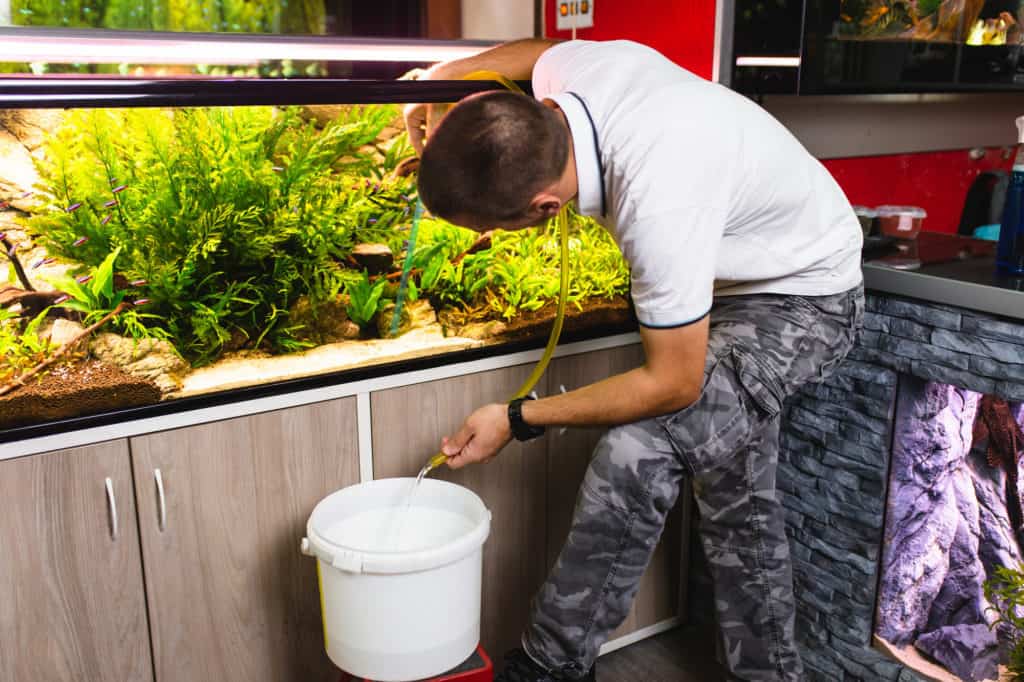
If you own fish with a preference for softer water, you may already be well aware that maintaining a low GH is crucial to your fish’s well-being. In an ideal scenario, soft water would be readily available. Unfortunately, we do not live in an ideal world and soft water can be harder to find than you think!
Because of this, fishkeepers often end up having to manually lower their tank GH. Here are a few ways you can do it:
Perform Frequent Water Changes
This is one of the easiest and safest ways to quickly reduce gH levels in your fish tank. Not only will it work wonders for your tank’s water chemistry, but it also helps to remove excess fish waste, food debris and other pollutants. Water changes reduce the GH of water by diluting fish waste, which is mainly composed of nitrogen components (ammonia and nitrate).
You can reduce your GH by replacing some of your tank water with softer water that is appropriate for your fish. For example, if you have Discus, replace at least 25% of the water with water that has a gH lower than 4. Then, use an aquarium test kit to make sure that your GH levels are now low enough for your fish.
If it is still too high, you may need to do a few days of water changes to bring GH down to the appropriate levels. Be careful not to make these changes too rapidly! Though the end goal is to lower GH, doing so rapidly may cause instability in water quality. This in turn will do more harm for your fish than good.
Change The Type Of Aquarium Water Used
You can also affect water gH levels by using different types of water. This is probably one of the more advanced methods, but it does work provided that you are careful about how the different water interacts with your aquarium’s chemistry. If you know specifically where to find soft/low GH water sources that are safe for your fish, go ahead and use them for water changes.
Other alternatives include using reverse osmosis (RO) or distilled water from your local pet shop. This type of water is sometimes known as “chemically pure” water. You can also use deionized (DI) water that you get from your local hardware store. The deionization process removes ionized minerals that are responsible for high water gH levels.
Some hobbyists may wonder if drinking water is appropriate for this purpose. In general, the answer is no. For instance, alkaline water is known for its health benefits when consumed by humans but can raise water hardness drastically, which is something you want to avoid. The hardness of tap water is also too high for most aquarium fish.
Attach Water Softening Pillows To Your Aquarium Filter
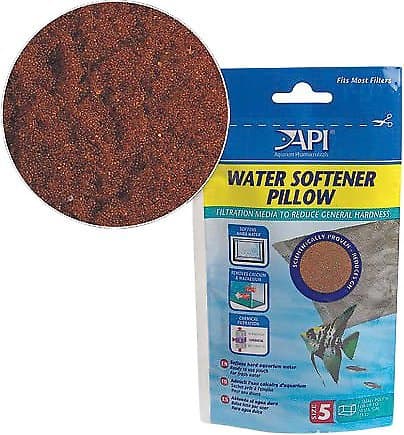
Whether you have a canister filter or hang-on-back filter, you can attach water softening pillow packets to it. This is one of the most effective methods for quickly reducing tank gH levels. These pillow filters contain resin beads that are responsible for binding minerals, such as calcium, and magnesium. This limits their ability to bond with other ions in your tank water, thus lowering GH.
Water softening pillows are basically the same thing as “water polishing” filters. By having a constant flow of water running through them, these pillows can effectively remove the minerals and ions that raise water hardness. From limescale-carrying minerals to calcium and magnesium ions, these pillows catch them all. This gradual process of ion and mineral removal also makes them safe for most fish.
Most water softening pillow packets require that you attach them to your filter using hose clamps or zip ties. Some will need to be stuffed into the filter’s water inlet (in between the hoses) while others may need to be placed inside of an existing cartridge before being inserted into the filter. Choose one that works for you, your filter, and your tank!
See also: Best Canister Filter Media Reviews
Use Water Softening Crystals
If you want to soften your aquarium water on the cheap, try using water softening crystals. These products are salt mixes that are specially made for aquarium use, and many claim to be able to soften water up to 100% of the time. If your aim is for a quick solution, this is one way to do it.
This method works by displacing calcium and magnesium ions with sodium ions in order to reduce GH levels. For instance, if you have lots of magnesium ions in your tank, the crystals will replace them with sodium ions, which “shifts” the ionic balance. When the ion balance is shifted, hardness minerals lose their power over how much they can bind with other ions in your aquarium water.
As with any chemical product, some care should be taken when using it to treat aquarium water. A general rule of thumb is to use one liter of water softening crystals for every 20 gallons of freshwater tank water. In marine aquariums, use half that amount or one liter per 40 gallons of water. However, you should always read dosing instructions carefully as these specifications may vary depending on the product.
Remove Existing Tap Water Stains
If you’ve had tap water sit in an open container for days or weeks before using it for a water change, this increases the likelihood of calcium buildup on the walls of the container. These buildups are known as “water stains”, and is widely known to be one of the most common causes for high aquarium gH levels. Therefore, it only makes sense to get rid of them before you add water to your tank.
Luckily, this is easy and requires only a few products:
– CLR (Calcium, Lime & Rust Remover)
– Hydrogen Peroxide (3%)
The process works by adding the 3 parts together in order to make a chemical solution that attacks the stains. Put equal parts of CLR, Hydrogen Peroxide, and water into a container. If you do not want to use the whole bottle of CLR or H2O2 on this project, half-dose them instead. Gently agitate the container every 5 minutes for at least 30 minutes in order to break down any existing hard water stains.
Lower The pH Of Your Water Source
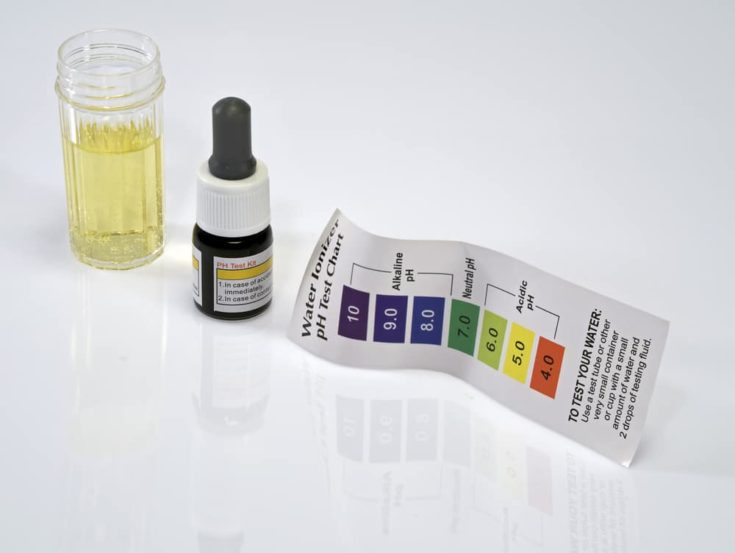
It may seem odd to start a discussion on pH when we’re discussing ways of lowering aquarium GH, but it’s a very effective way of removing existing minerals from your water source. The buffering capacity of water is directly related to its overall pH level, which means the higher the pH of your water source, the more likely it will be able to hold onto existing minerals.
When you lower your tap/well/source water’s pH with acid buffers such as gallic acid, you reduce its ability to bind to hard minerals by neutralizing carbonates and bicarbonates. In other words, acidic water can hold onto less of everything, including calcium and magnesium minerals. This means your aquarium water will become softer as a result.
You can also opt for natural alternatives such as the indian almond leaf. These leaves leech tannic acid into the water, which systematically eats away at existing minerals. The only problem is that it can turn your aquarium water brown, causing some aesthetic issues. However, we think that this is a fair tradeoff for softer water and healthier, happier fish!
Purchase Domestic Water Softeners
This method is by far the most expensive, but also probably one of the safest for aquarium inhabitants. These small machines are made to treat human drinking water, but the principle of operation is the same for a small aquarium. The machine passes your freshwater or saltwater source through a resin tank where minerals and carbonate ions are exchanged for sodium ions, thereby reducing GH and KH levels.
This exchange process works continuously, so the only drawbacks are that you need a larger capacity tank for a decent volume of water. In addition, the minerals that are removed do not get added back into your aquarium. If this is an issue, you can always opt to remineralize your water with commercially available products.
As far as GH-lowering methods go, this may be the most hands-off technique. All you have to do is pour your water into a bucket that goes into the machine, and let it run through the system overnight. Though not a slow process by any means, you should still add this water to your aquarium in a slow drip over a period of at least an hour in order to avoid shocking the fish.
Use Inert, Lime-Free Gravel
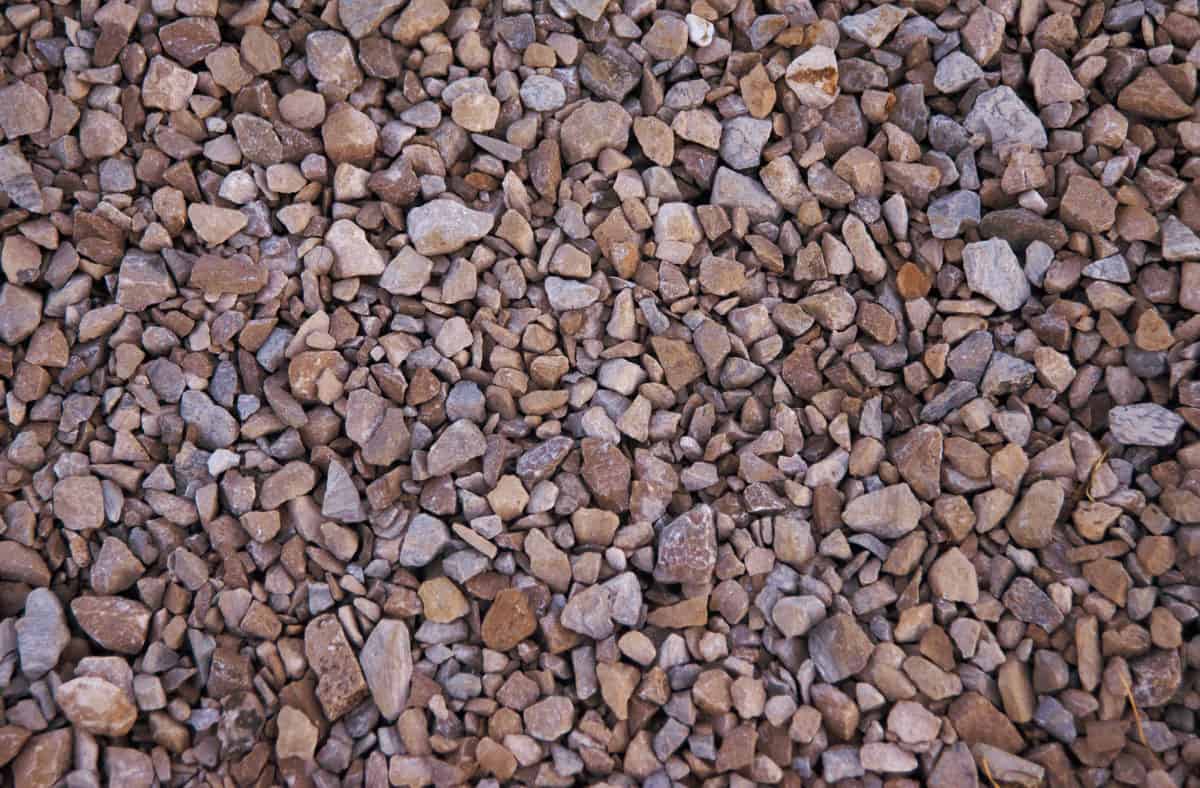
Using an inert, lime-free gravel is one of the best things you can do to lower the GH of your water. This is because lime-based gravels, such as limestone or dolomite, can rapidly accumulate magnesium and calcium ions over time. Those hoping to lower their tank GH should also steer clear of substances like pea gravel or crushed coral.
Lime-free gravels are often marketed as “chemical-free”, which is great for fishkeepers who want to avoid adding anything to their water. For instance, cichlid keepers may already be well-acquainted with cichlid sand, which is an inert material with a near-zero GH level. Other types of inert substrates include crushed granite, clay pellets, or even river rocks.
In addition to selecting an inert substrate, you should also keep it clean. If you have a bottom substrate that’s prone to trapping detritus or leftover food, you run the risk of raising GH levels in the long run. For this reason, it’s often used as a gravel vacuum to get rid of any impurities that settle on the bottom.
Read: How Much Substrate Do You Need?
Introduce Aquarium-Safe Peat Moss
Many aquarium fish keepers often use peat moss to lower their pH, a process that’s commonly known as “Peat-Filtering.” However, some peats on the market might also contain lime or dolomite rocks, which can throw off your GH level after a period of time.
If you’re going to introduce peat moss into your aquarium water, you should make sure it’s free of dolomite and lime. Luckily, most peat sold as a substrate is designed for planting aquatic plants in aquaria, meaning it’s safe to use as a GH-reducing agent.
Peat works by binding to positively charged molecules such as calcium or magnesium. When you add it to your aquarium and let it sit overnight, the peat falls out of suspension and onto the bottom substrate. Any excess peat can be removed in a gravel vacuum so that it doesn’t accumulate over time.
How Do We Test The GH Of Water?
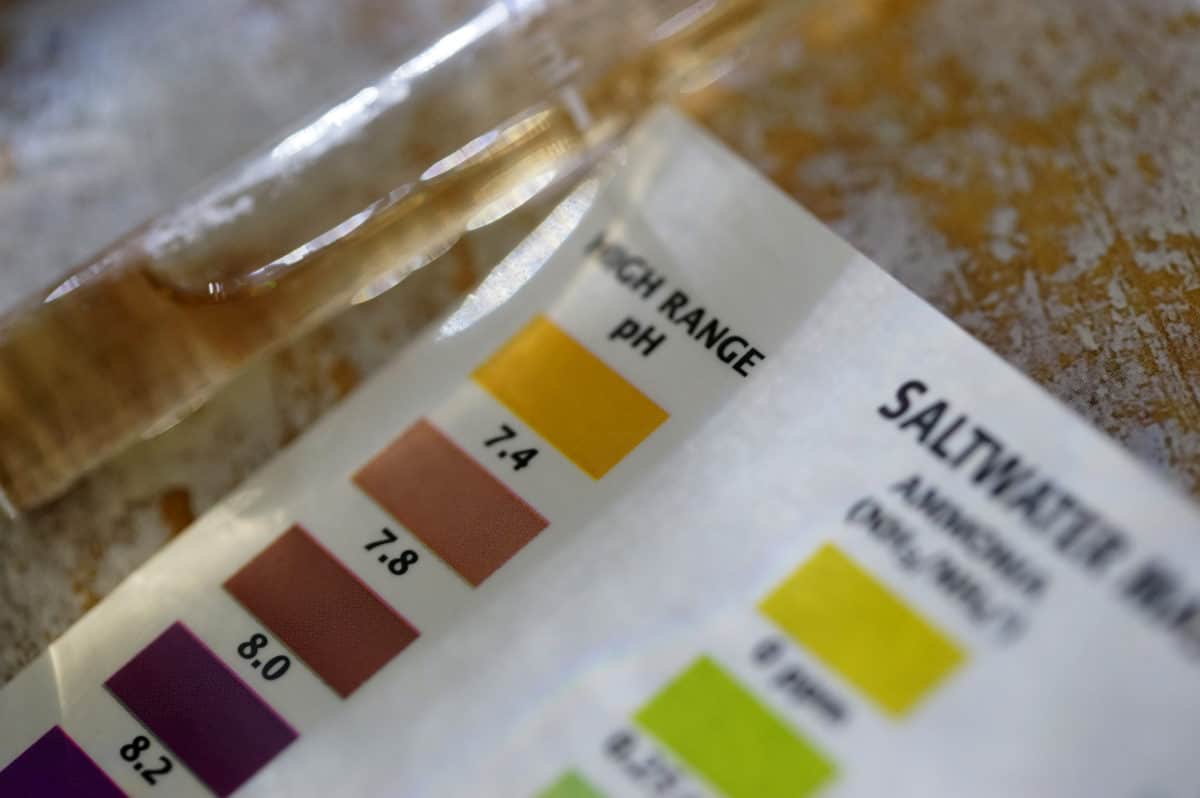
Testing the GH of your aquarium water is as simple as getting a test kit from your local fish store and adding some drops to the water. These test kits are fairly inexpensive, and allow you to measure your GH fairly accurately. If you’re looking for an even more accurate way to test the GH level of your water, pick up a freshwater ichthycologist test kit, which can test pH, KH, and GH.
To measure the GH of your aquarium, simply take a sample of aquarium water and add some drops to the testing solution. After waiting for a few minutes, look at the color chart included with the test kit. If you’re aiming for a low GH (below 60 ppm), look for a color closer to blue, and if your aquarium water has a high GH (above 70 ppm) look for a color closer to purple.
In general, GH is measured using parts per million or ppm. A reading of 0-59 ppm is considered soft water, 60-120 ppm is medium hardness, and anything above 120 is considered hard water. The ideal range for your tank would depend on the species of fish you’re keeping, but generally, you want to keep your GH between 4 and 12.
What Is The Relationship Between GH, KH, and pH?
The relationship between GH, KH, and pH is a fairly simple one. Essentially, the higher the levels of carbonate hardness (KH) and general hardness (GH) in your tank water, the more acidic your aquarium pH will be. This is because these minerals bind with excess hydrogen ions, which reduces the amount of free hydrogen floating around in your tank.
In a nutshell, GH and KH bind with positive hydrogen ions, which reduces the amount of free hydrogen in your aquarium. If you have 100 ppm of carbonate hardness (KH) and 200 ppm of general hardness (GH), your pH would be 7 because there are fewer free hydrogen ions floating around. In short:
- The more GH and KH in your aquarium water, the higher your pH will be.
- The less GH and KH in your aquarium water, the lower your pH will be.
Conclusion
We hope this article provides you with some insight into reducing aquarium GH levels in your tank! Providing your fish with an ideal GH level will ensure that they’re happy and healthy, which is the most important thing when you’re caring for an aquarium. In many cases, this can make a huge difference in the general well-being of your fish!
Do you have any lingering questions about lowering water hardness for your aquarium? Feel free to ask us in the comments section below – we love hearing from our readers! And if you found this article helpful, please do us a favor and share it with your friends. Your support means the world to us, and we appreciate it very much!
Thanks again for reading, and happy fishkeeping!

I have a 29 gallon 3 year established planted tank with Mollies, Guppies, Platties, a few ghost shrimp, an algae eater (not pleco) and a gold mystery snail. My GH is 21* but my KH is 3*. My PH is 6.4. I run a Fulval 207 with a Phosphate pad, a Nitrite pad, and a Nitrozorb pouch in addition to the standard filters, ceramic disks, and carbon pouch. I have no idea where to begin at this point but I’m losing fish. What do I do? I can’t keep the tank balanced and I do everything including water changes by the book.